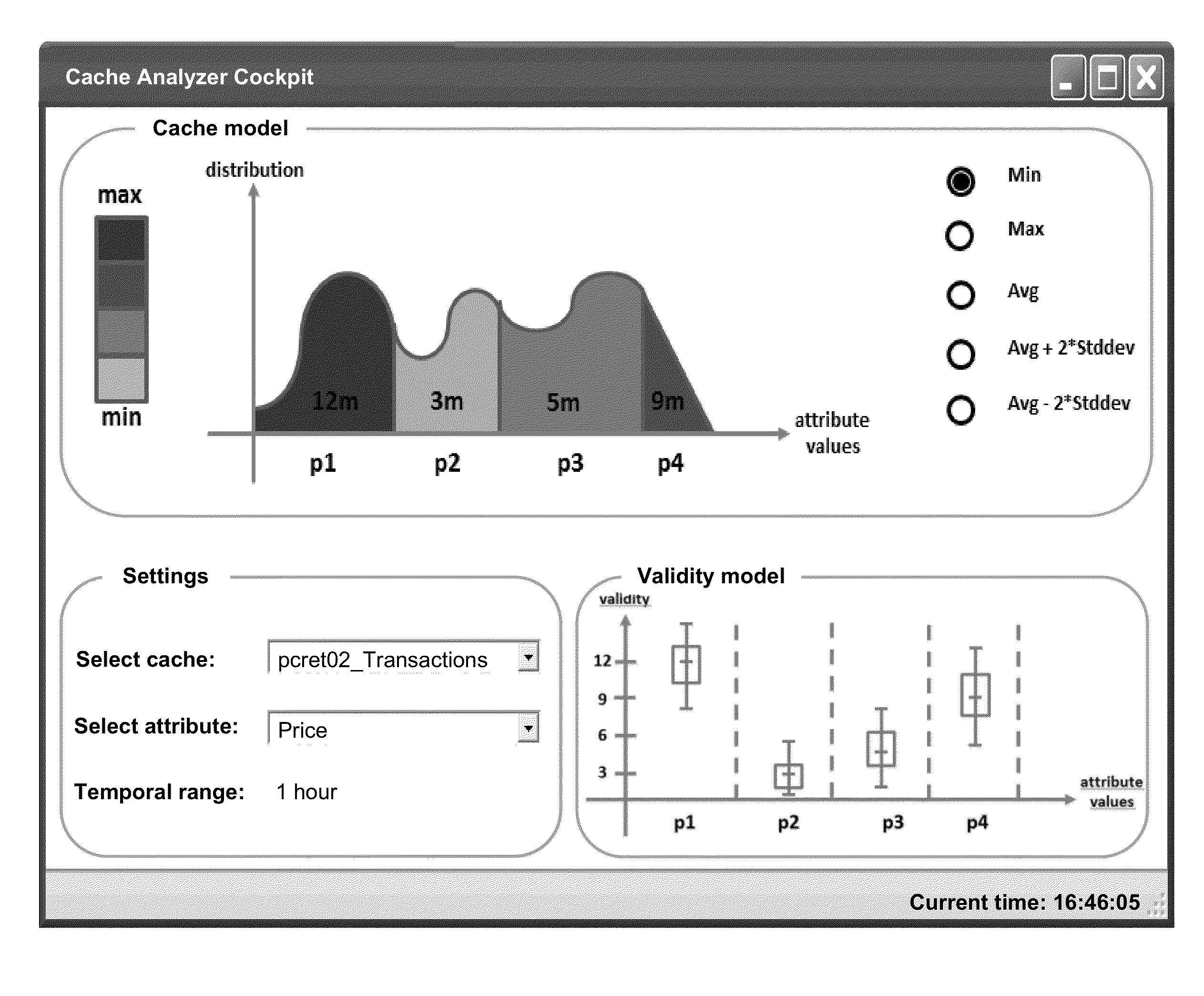Systems and/or methods for statistical online analysis of large and potentially heterogeneous data sets
a statistical online analysis and data set technology, applied in the field of complex event processing (cep) systems and/or methods, can solve the problems of not providing a full spectrum of solutions, no meaningful consideration has been given to the statistical modeling of cache characteristics, and the database system is not designed for continuous processing of incoming events, so as to improve customer interaction and responsiveness, efficient data access and scalability, and improve customer service. the effect of responsiveness
- Summary
- Abstract
- Description
- Claims
- Application Information
AI Technical Summary
Benefits of technology
Problems solved by technology
Method used
Image
Examples
example implementation
[0040]The following example implementation design describes how to couple in-memory caching technology with stream mining in order to derive CEMs over caches in accordance with certain example embodiments.
A. Preliminaries
[0041]1. Cache and Listener
[0042]An in-memory cache is designed for a fast retrieval of cached elements. The cache preferably provides map functionality in the sense that elements may be inserted into the cache with a unique key. The key, in turn, may be used to retrieve that specific element from the cache. In addition to the key, a cached element also includes the actual content, which is the information stored in the element. Depending on how structured the element is, this content may correspond to several attributes. Thus, a cache may include key / value pairs with the value being a set of attributes. For the case of object data, for example, the relevant set of attributes may be defined and corresponding access methods may be provided. For the sake of simplicity...
PUM
 Login to View More
Login to View More Abstract
Description
Claims
Application Information
 Login to View More
Login to View More - R&D
- Intellectual Property
- Life Sciences
- Materials
- Tech Scout
- Unparalleled Data Quality
- Higher Quality Content
- 60% Fewer Hallucinations
Browse by: Latest US Patents, China's latest patents, Technical Efficacy Thesaurus, Application Domain, Technology Topic, Popular Technical Reports.
© 2025 PatSnap. All rights reserved.Legal|Privacy policy|Modern Slavery Act Transparency Statement|Sitemap|About US| Contact US: help@patsnap.com



